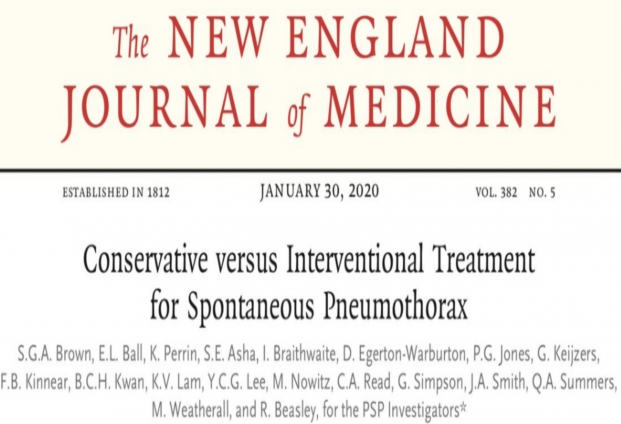
Supporting the oldest rule of medicine - first, do no harm, a study co-funded by the Emergency Medicine Foundation (EMF) is expected to cause a major shift in thinking around how doctors worldwide treat a collapsed lung.
Each year, up to 3000 Australians suffer a pneumothorax, known as a collapsed lung, when a spontaneous leak from the surface of the lung causes air to collect inside the chest. This painful condition can be caused by underlying lung disease, but also occurs for no obvious reason.
For decades, the standard treatment has involved doctors inserting a tube into the patient’s chest to drain the collected air, helping the lung to reinflate. The treatment is painful and may lead to organ injury, bleeding, infection and occasionally require surgery.
This landmark six-year study found it is better to treat patients with simple pain relief before sending them home to await the lung’s natural re-expansion and recovery. These patients had half the usual rate of recurrence of a collapsed lung.
An EMF research grant of $50,086 supported the Queensland arm of the study. In total 10 Queensland Emergency Departments took part.
EMF grant recipient and Queensland joint study lead, Dr Frances Kinnear said that 85 per cent of patients did extremely well with no intervention at all, while the results also demonstrated the safety of the conservative treatment approach.
“This novel approach was able to resolve the pneumothorax within eight weeks and resulted in a significantly lower risk of complications,” explained Dr Kinnear, Director of Adult’s & Children’s Emergency Research at The Prince Charles Hospital.
Co-investigator and Queensland joint study lead, Professor Gerben Keijzers, who is a senior staff specialist at the Gold Coast University Hospital Emergency Department, gave an overview of the study saying:
“A total of 316 patients took part in the trial involving 100 clinical researchers in 39 hospitals across Australia and New Zealand. 154 patients underwent standard interventional lung drainage management, while the remaining 162 were managed conservatively with simple pain relief and observation alone.
“The interventional management group of patients had an average hospital length of stay of 6.1 days with 41 patients experiencing 1 or more adverse events; compared to the conservative group of patients’ average hospital stay of only 1.6 days, with just 13 experiencing adverse events,” he said.
In Australia the study was coordinated by the Centre for Clinical Research in Emergency Medicine (Harry Perkins Institute of Medical Research) at Royal Perth Hospital. Overall lead investigator and emergency physician Professor Simon Brown from the Centre for Clinical Research in Emergency Medicine said the findings are a game-changer.
”We’ve been putting tubes into people with collapsed lungs since the beginning of the 20th century, thinking we were doing our best to treat the condition. Now, this study makes it clear that conservative treatment is the best approach, even when the lung collapse is large.”
“Patients can be sent home to recover, return to work and their normal lives more efficiently and effectively, avoiding all the complications that go along with sticking a tube into the chest such as infections and bleeding.”
The study results have been published in the prestigious New England Journal of Medicine.



